|
A database of 299 high resolution structures with low homology has been extracted from the PDB (Protein Data Bank). Secondary structure have ben calculated on the basis of backbone hydrogen bonding (DSSP). 2101 helices have been found in the database. The helix of length between 5 and 31 have been counted:
BACK. Back to the "Helix page". |
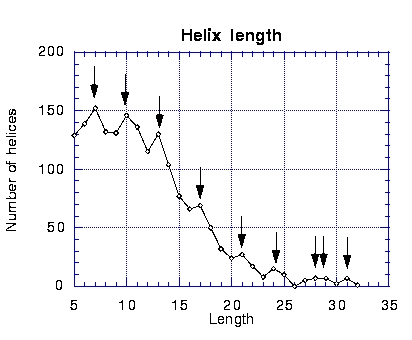
The distribution shows peaks for lengths 7, 10, 13, 17, 21, 24, 28, 29 and 31. The maximums present a periodicity of 3-4. |
|
BACK. Back to the "Helix page". |
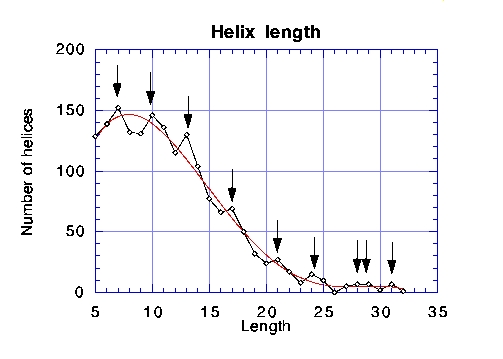 A smoothing function is applied to the length distribution.
When the observed number of helix is higher than the curve, it length is more favourable than expected and so defined as "good length". When the observed number is lower, it length is defined as "bad length".
A smoothing function is applied to the length distribution.
When the observed number of helix is higher than the curve, it length is more favourable than expected and so defined as "good length". When the observed number is lower, it length is defined as "bad length".
The good lengths are 7, 10, 11, 13, 14, 17, 21, 24, 25, 28, 29, 31. The bad lengths are 8, 9, 12, 15, 16, 19, 20, 23, 26, 30. The lengths 5,6 ,18, 22 and 27 are not classified. |
|
Example of 10-residue amphipathic helix: 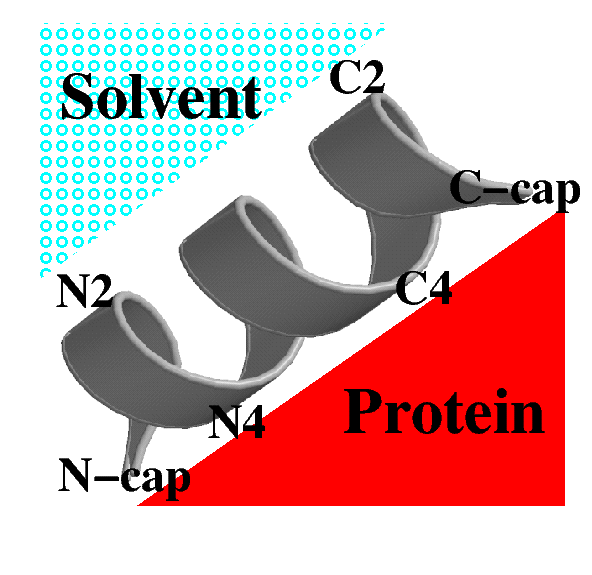 N-cap and C-cap are on the same side (protein exposed), N2 and C2 are solvent exposed.
N-cap and C-cap are on the same side (protein exposed), N2 and C2 are solvent exposed.
The helix are generaly located on the outside of the proteins and are therefore amphipathic. The N-cap is usualy on the side of the protein, the N2 position being solvent exposed. If the number of turn is an integer, the C-cap will be on the same side than N-cap i.e. the protein side what is favourable. If the number of turn is not an integer, the helix end will be on the opposite side of N-cap what is not favourable. Finaly the lengths with an integer number of turns are more favourable than other lengths. BACK. Back to the "Helix page". |
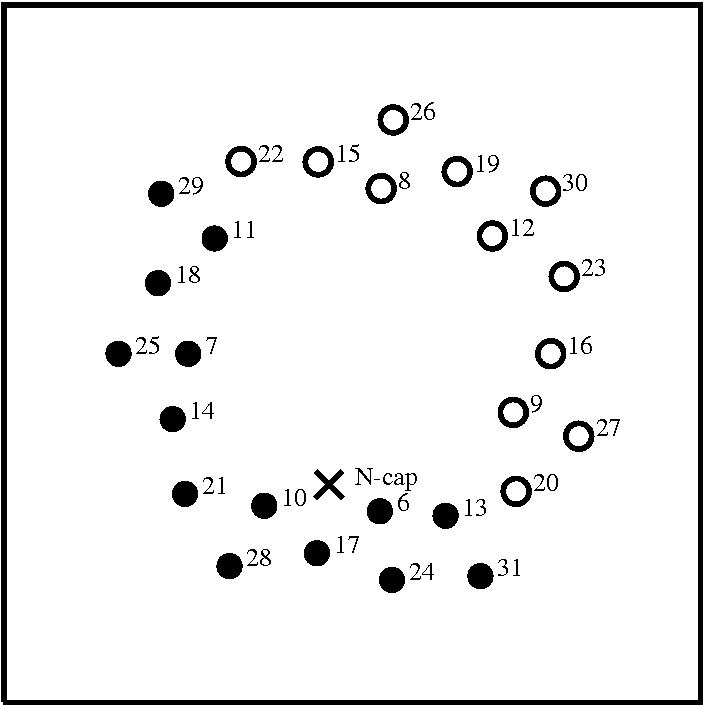
Position of C-cap relative to N-cap in function of length. The good length are black circle, the bad length are white cirle. The N-cap is a cross. The Figure above displays the position of C-caps in function of helix length. The good lengths C-cap are found on the same side than N-cap, the bad length on the opposite side. Here is so a clear corelation between good/bad lengths and the position of the C-cap residue compared to the position of N-cap residue. (Based on the figure, lengths 6 and 18 have been classified as good length, lengths 22 and 27 as bad lengths.) |
|
As C-cap of good length helices are on the same side than N-cap, the C2 of good length helices are on the opposite side, solvent exposed. BACK. Back to the "Helix page". |
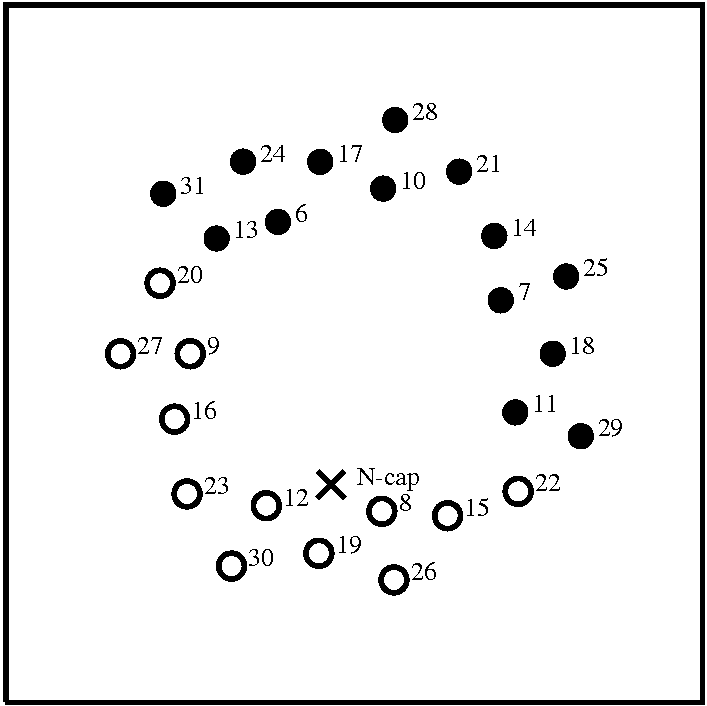
Position of C2 relative to N-cap in function of length. The good length are black circle, the bad length are white cirle. The N-cap is a cross. |